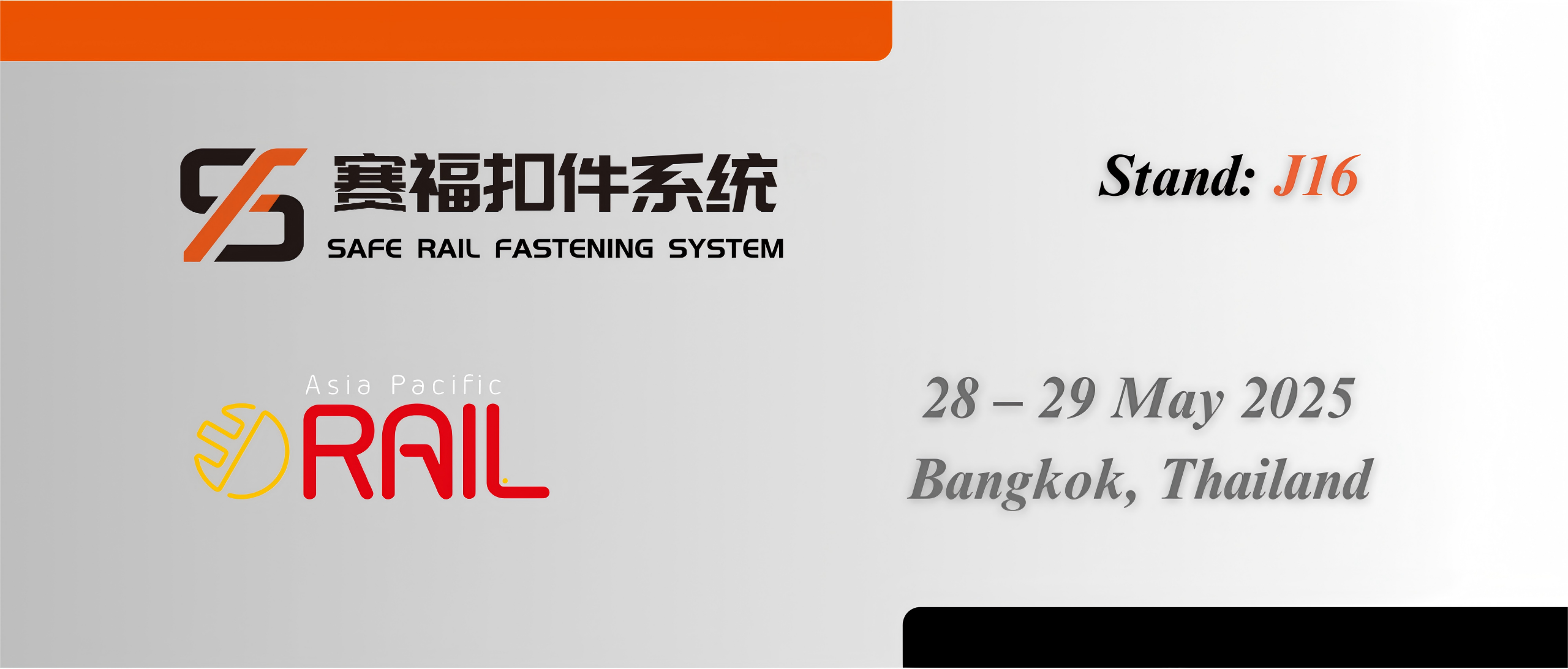Ⅰ.Components
The E54AV Fastening System Components include:E54AV-rail clip, UIC54-rail gauge insulator, SH54-cast shoulder, rail pad.
Components of single sleeper
| No. | Item | Specification | Quantity/Pcs | Note |
| 1 | Rail Clip | E54AV | 4 | |
| 2 | Rail Gauge Insulator | UIC54 | 4 | |
| 3 | Cast Shoulder | SH54 | 4 | |
| 4 | Rail Pad | 140/150/5.5 | 2 |
Technical specification for E54AVfastening system assembly
| Design standard | *For specific information, please contact us. | |||||
| No. | Item | Performance requirements | Test method | Note | ||
| 1 | Maximum locomotive axle load | *For specific information, please contact us. | *For specific information, please contact us. | |||
| 2 | Minimum curve radius | *For specific information, please contact us. | *For specific information, please contact us. | |||
| 3 | Design running speed | *For specific information, please contact us. | *For specific information, please contact us. | |||
| 4 | Clamping force | *For specific information, please contact us. | *For specific information, please contact us. | |||
| 5 | rail longitudinal resistant | *For specific information, please contact us. | *For specific information, please contact us. | |||
| 6 | Torsional resistance | *For specific information, please contact us. | *For specific information, please contact us. | |||
| 7 | Attenuation of impact loads | *For specific information, please contact us. | *For specific information, please contact us. | |||
| 8 | System fatigue | Gauge enlargement | *For specific information, please contact us. | *For specific information, please contact us. | *For specific information, please contact us. | |
| Change rate of rail longitudinal resistance | *For specific information, please contact us. | *For specific information, please contact us. | ||||
| Change rate of joint stiffness | *For specific information, please contact us. | *For specific information, please contact us. | ||||
| Change rate of clamping force | *For specific information, please contact us. | *For specific information, please contact us. | ||||
| 9 | Electrical resistance | *For specific information, please contact us. | *For specific information, please contact us. | |||
| 10 | Effect of severe environmental conditions | *For specific information, please contact us. | *For specific information, please contact us. | |||
| 11 | Anti pulling-out force | *For specific information, please contact us. | *For specific information, please contact us. | |||
| 12 | Horizontal adjustment | *For specific information, please contact us. | *For specific information, please contact us. | |||
